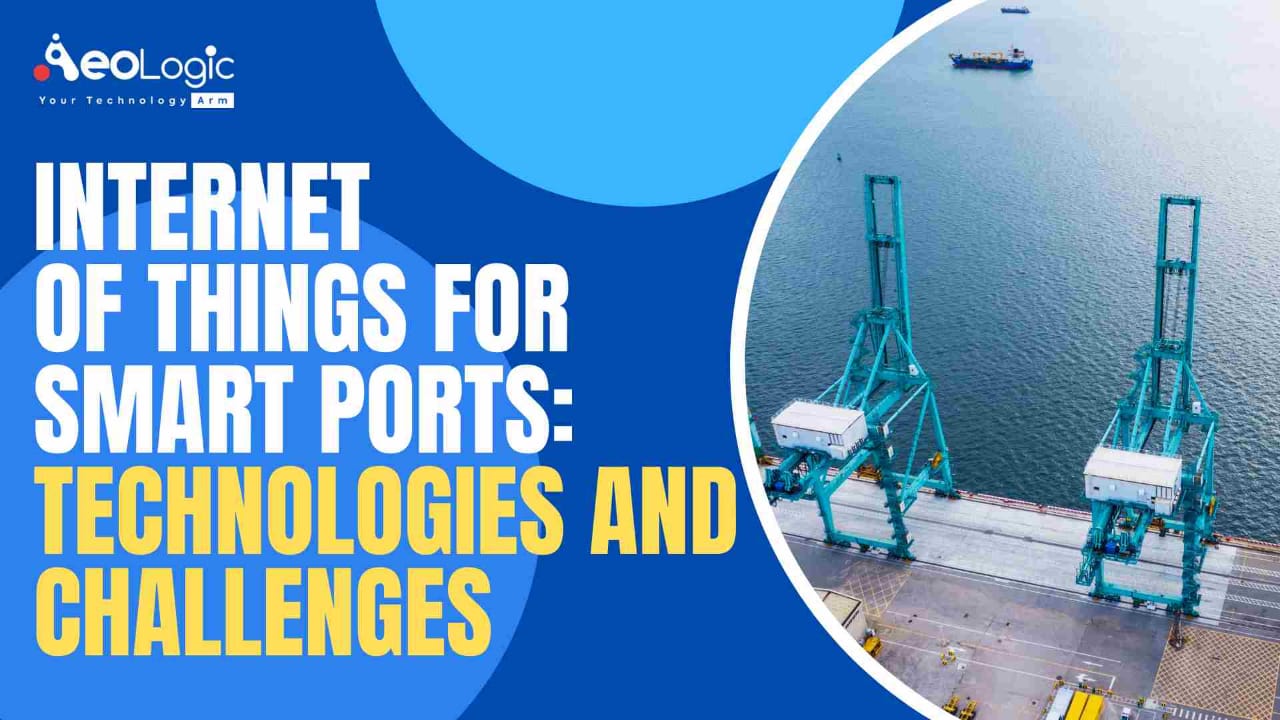On board, berthed and on the port, smart technologies are encouraging widespread digitalization. It is a process that has the potential to direct shipping processes into the future. Digitization in the maritime industry supports asset, complex logistics, and supply-chain management. Smart technologies are taking this an extra step. With so-called smart shipping set to tackle challenges and provide far-reaching advantages for a range of maritime players. From big data and cross-operations visibility to A.I., automation, and blockchain, the complete supply chain stands to leverage these smart and accessible advancements. Internet of Things for smart ports can change the landscape of the industry by improving the relevant operations.
What is a Smart Port?
A smart port is an automated port incorporating data analytics to create the right business decisions and run operations efficiently. The notion is to use smart technology to augment a port’s efficiency, and enhance performance and economic competitiveness. Applying automated processes will not only leverage the port but the wider supply chain.
Implementing the Internet of Things for smart ports can share real-time information. The success of smart ports depends on humans and technology collectively working to benefit the port. Ultimately, its customers. Furthermore, upholding a seamless operation is always a challenge. Since it involves communication between several parties and a collaborative approach.
Also, cloud-based reporting provides a real-time, dynamic overview of all tagged assets. For instance, the smart port in Rotterdam uses digital infrastructure to drive predictive maintenance, predictive berthing, and a range of several other processes. In order to provide an enhanced operational running of the physical infrastructure. The one crucial point for smart ports is the improved efficiencies. Another is the demand to pivot around a growing trend of digitized and automated vessels. There are several benefits of incorporating the Internet of Things for smart ports. Let’s discuss them in the following sections.
Also read: The Importance of Information Technology in Healthcare
Container Management with IoT-based Digital Tools
To ensure widespread implementation of IoT in the maritime industry, the first step is enabling IoT infrastructure and container management. Seaports can start by using digital devices. In ports that are still using paper manifests or those that are not attached directly to the container, losses and misplacement are not so infrequent. Moreover, manual tracking of cargo slows down the delivery. As well as it can also place an undue burden on customs for international arrival and payments. On the other hand, IoT tools are fast to read and send.
Hence, each container that arrives or leaves the smart port can have an IoT device. It can help in identifying the container’s contents in detail. It is also readable through the cloud by the port employees or authorized partners that are waiting for a delivery. Similarly, IoT devices can also tag warnings, certifications, and safety inspection protocols.
Faster Repairs and Maintenance with Enhanced Operational Safety
Safety has always been a concern for ports, and it’s always challenging to plan and schedule regular inspections and maintenance. The internet of things for smart ports uses a comprehensive monitoring application that can play a positive role in achieving the required level of safety. Whereas, in manual handling, most decisions are based on speculations instead of updated data. With seaports running against the clock to dodge penalties, expenses, and delays pertaining to fixing broken gears, it’s significant to create a safety management program.
Internet of things for smart ports can aid in simplifying repairs and maintenance with performance monitors attached to pumps, engines, or gates. In order to obtain real-time data on speed and reliability of performance. Even in case of a mechanical failure, performance sensors can allow the repair team to easily address the issue and resume operations much quicker.
Ports can also prevent potential security breaches with IoT. Making an alert system that links to the cloud can help in facilitating quick loss prevention. Moreover, digital seals can be used in authenticating a chain of custody at each security checkpoint to check against tampering.
Fleet and Traffic Management
With ports getting busier than ever, IoT can help in collecting, storing, and analyzing traffic pattern data for every fleet. Integrated sensors can monitor everything about the number of ships passing through a lock, their class, and other details. Also, this can help in planning port expansion, creating new safety procedures, and justifying repairs.
Also read: Role of Cloud Computing in Autonomous Driving Development
Conclusion
To conclude, the future based on IoT is already here. Smart ports will attract new clients, and enhance fleet safety. As well as providing the desired data to make better decisions. Ranging from airports to trucking, IoT has already made its way in industries based on logistics, and it’s time for ports to do the same.
Connect with us at Aeologic Technologies to know more about upcoming technologies!
FAQs
What are the challenges in IoT?
There are several challenges in adopting IoT. Such as wireless coverage, high sensor costs, battery life, and a crucially a lack of standard security and privacy measures.
What is the biggest challenge associated with IoT?
The major problem of security of IoT comes from the smart objects themselves. In fact, these devices can be easily affected by malware or hacked. One solution to make it safer would be to configure each IoT sensor. So that it connects only to known and secure enterprise authentication credentials.





